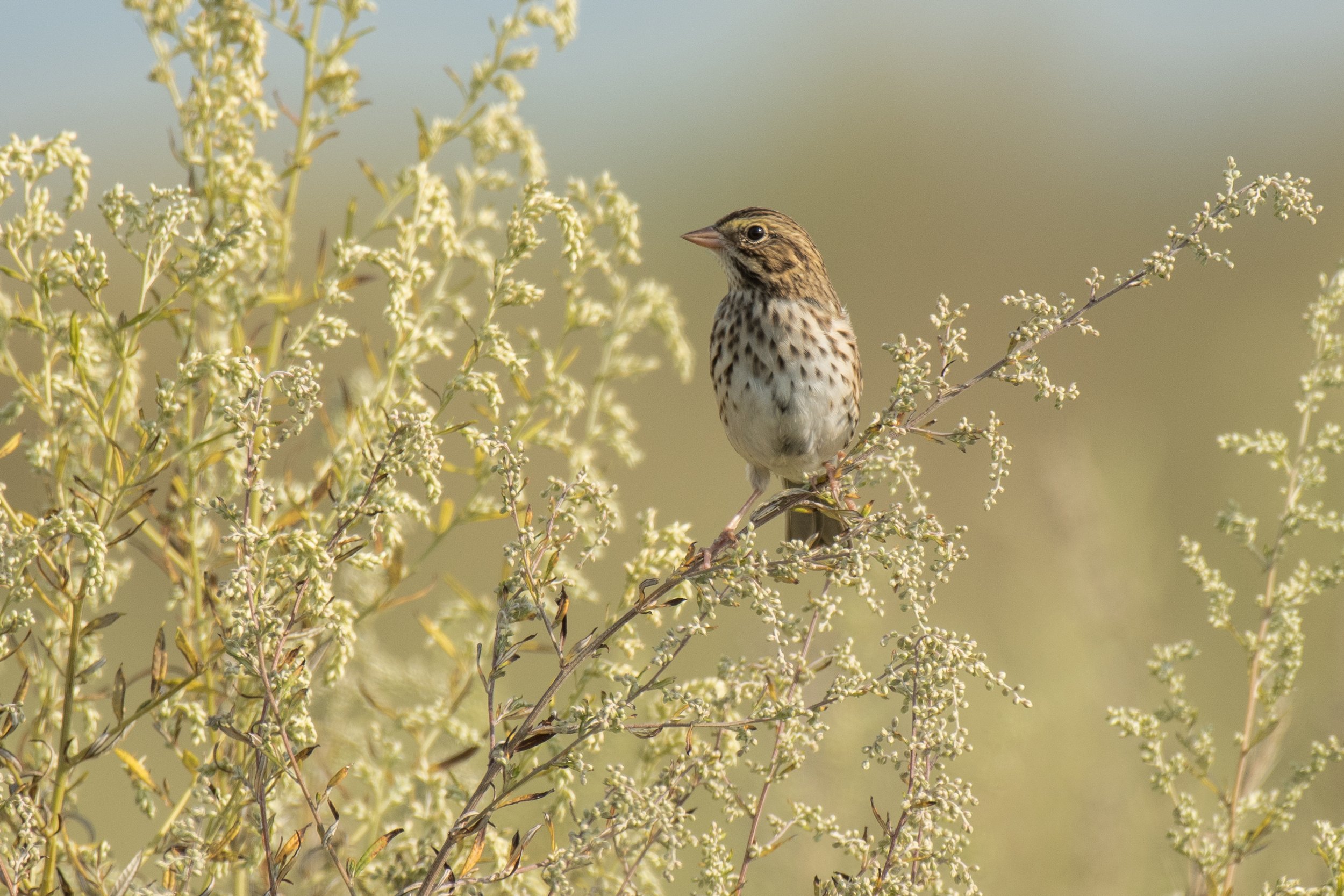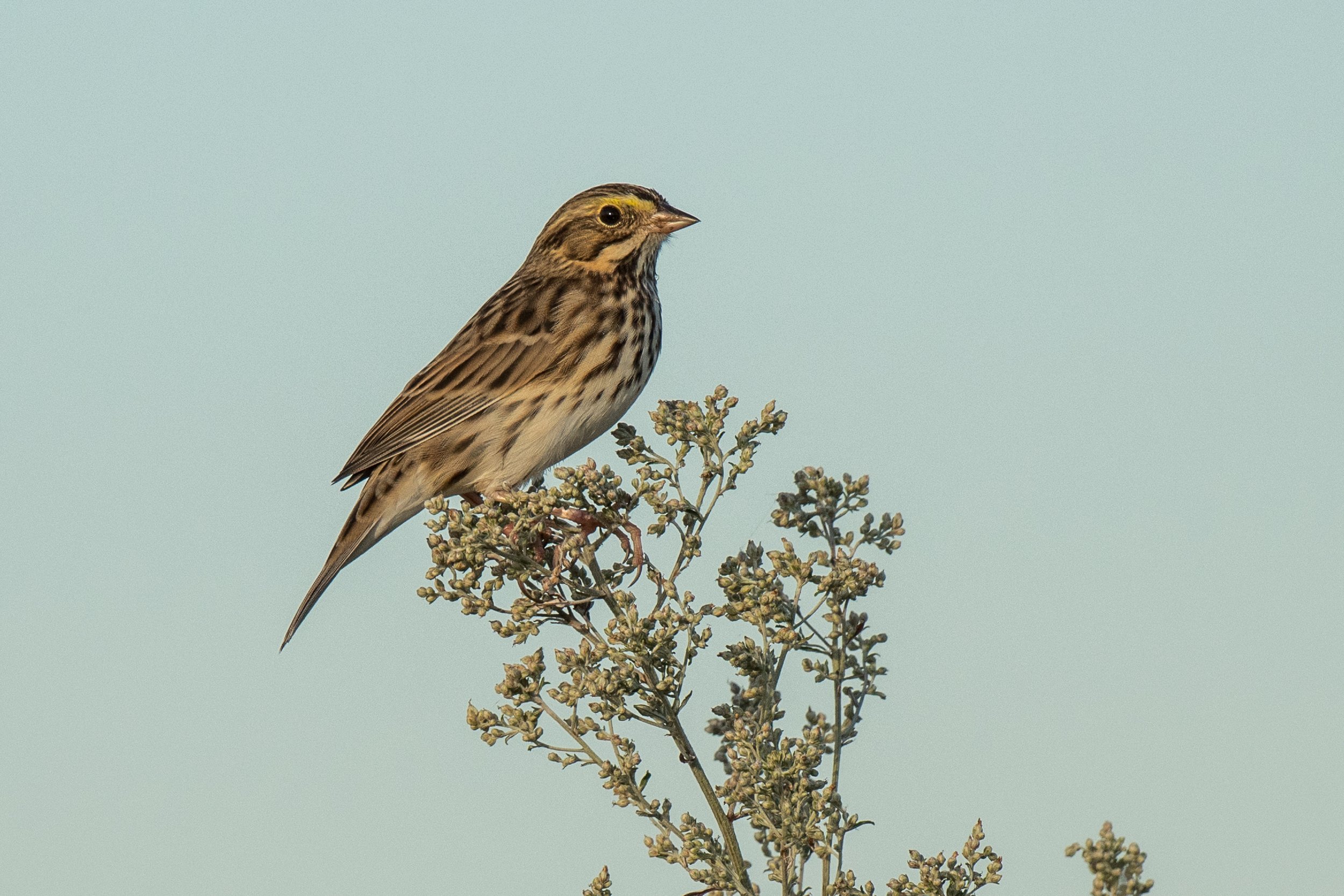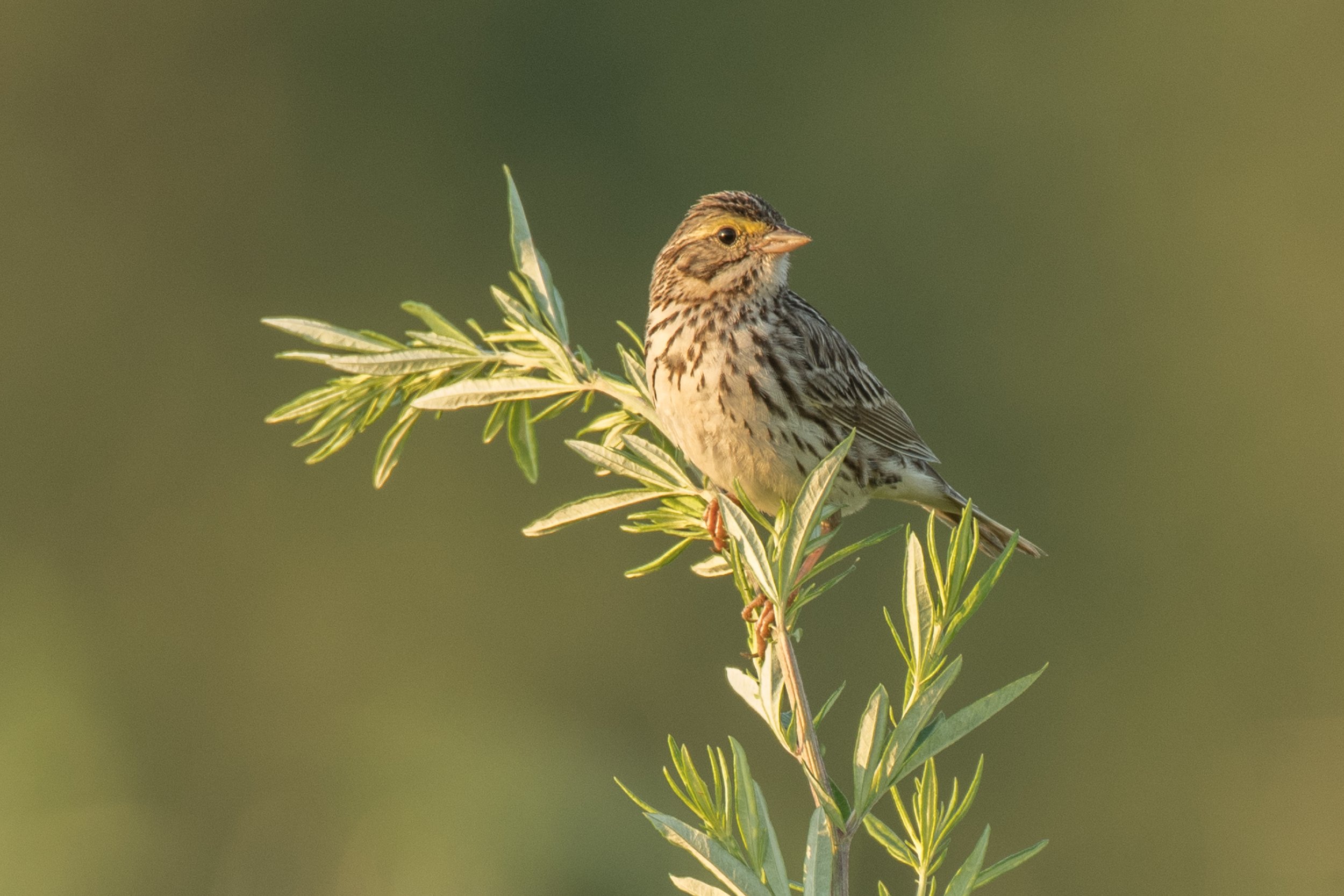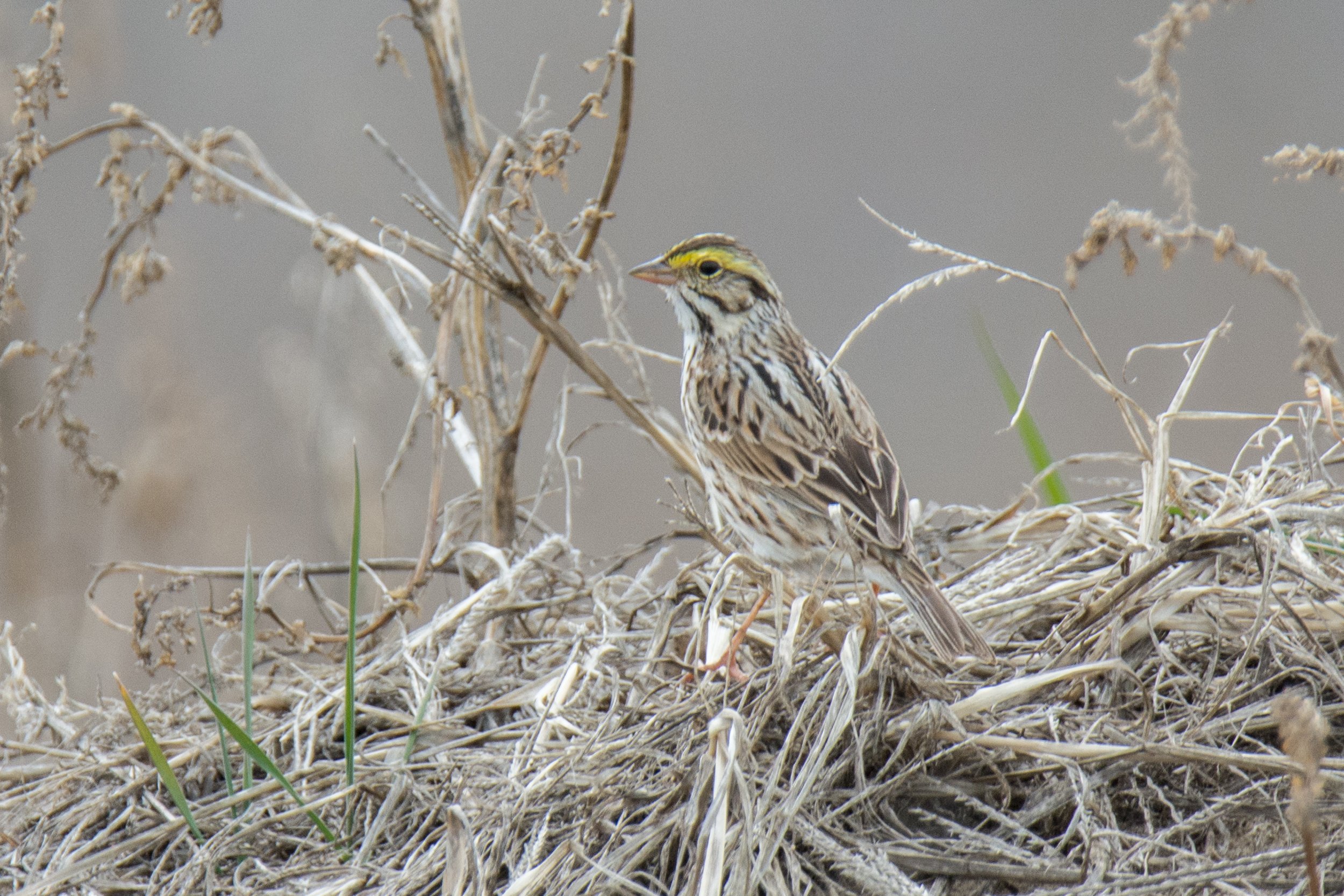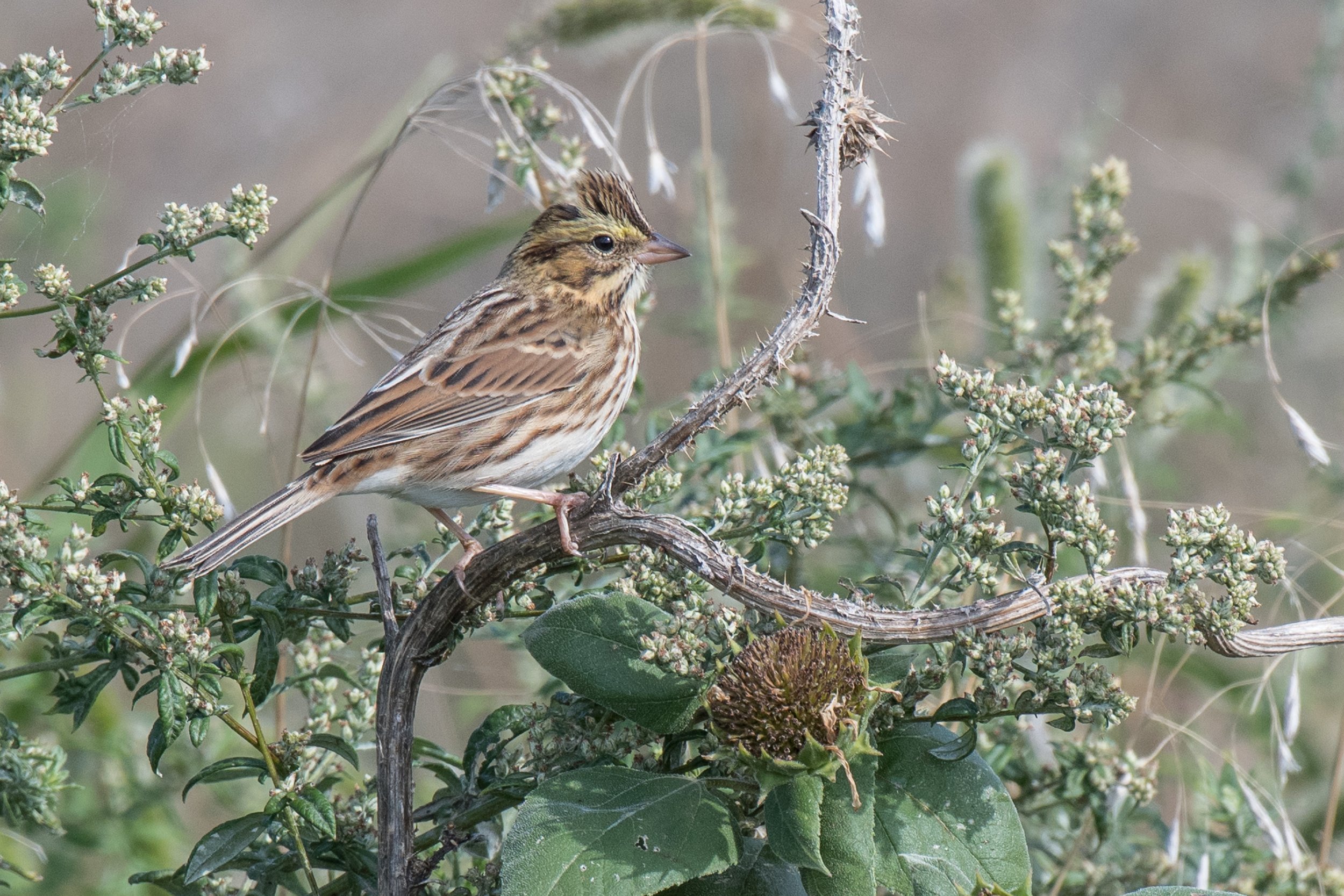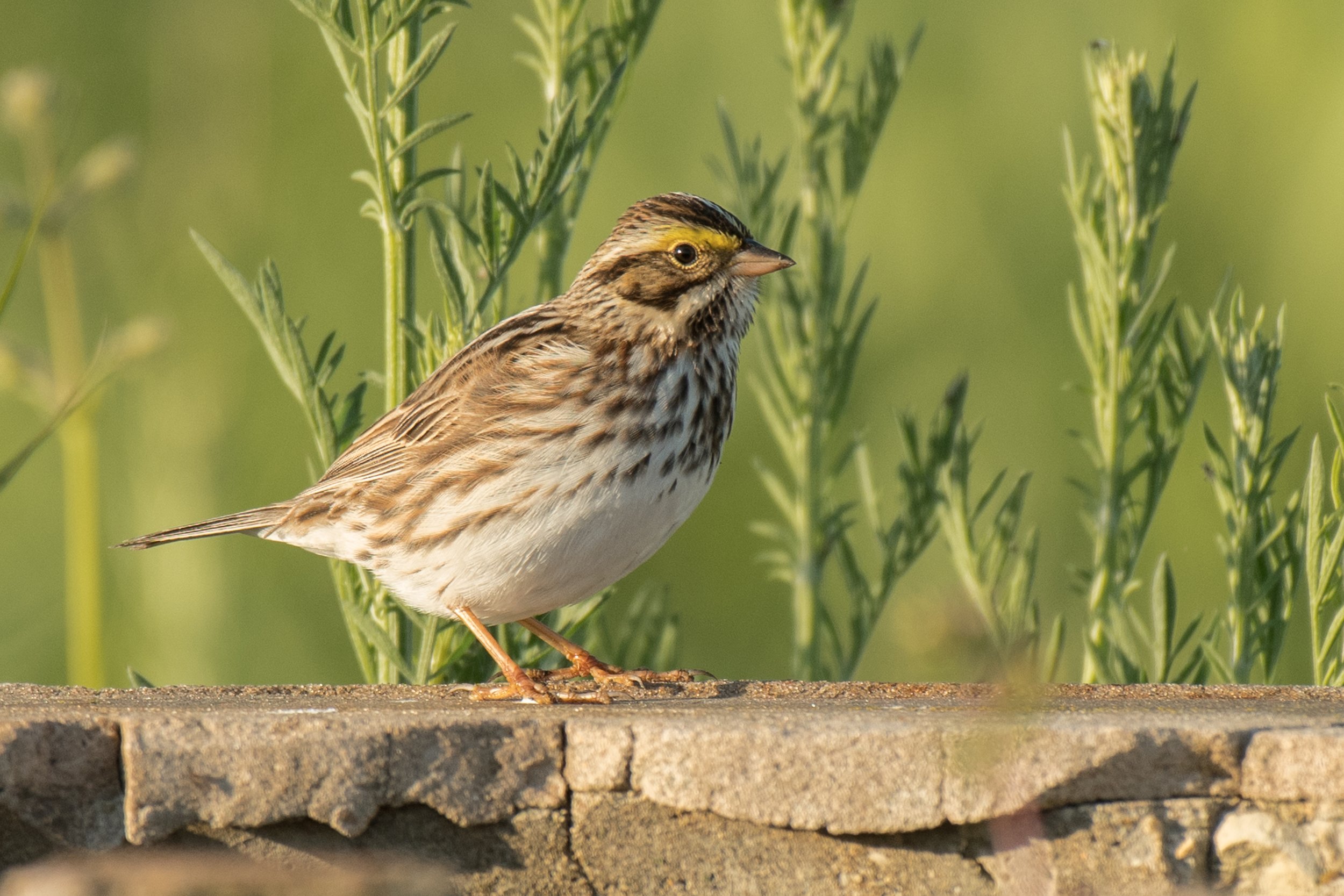Dan's Feathursday Feature: Savannah Sparrow
In Mark Haddon’s novel, The Curious Incident of the Dog in the Nighttime, the protagonist Christopher tells this humorous anecdote. On a train passing into Scotland are an economist, a logician and a mathematician. They see a brown cow standing parallel to the tracks.
Economist: Look, the cows in Scotland are brown.
Logician: No, there are cows in Scotland, of which at least one is brown.
Mathematician: No, there is at least one cow in Scotland, of which one side appears to be brown.
When I first started birding, I was the economist, content to draw sweeping conclusions from superficial tidbits of information. For example, once I learned to tell the difference between a House Sparrow and a Song Sparrow, I spent a whole summer calling every brown bird with a wingspan of less than twelve inches a Song Sparrow.
Eventually, logic whispered in my ear: “There are many little brown birds in this field. The field guides say there are more than a dozen different species of sparrow in the Midwest, so what are the odds that all the sparrows in this field are Song Sparrows? You’d better start looking more closely.”
I did. I soon realized that of the many sparrows in any grassland or marsh, at least some are brown. Actually, it’s probably accurate to say that all are brown. But there is brown, and there is brown. Besides the many different shades of brown, each type of sparrow has its own strategically placed patches of gray, or black, or yellow—not to mention differences in size, leg color, tail length, bill shape.
Logic eventually told me I should be using more than my eyes to find and ID these various little brown birds, especially the most furtive among them, who seldom do me the courtesy of showing themselves. So I learned their songs, their calls, their scolds. Learning to use my ears for bird ID was an eye-opening experience. I became able to “see” birds that I never saw before, and suddenly every savannah and marsh held twice as many birds as it had before.
That’s when I fell in love with sparrows. These unobtrusive little brown birds, right there under my nose, often hiding expertly in the smallest tree or patch of grass, offered both thrilling variety and endless opportunities for ID challenges.
I like to think of the Savannah Sparrow as the most unseen of all sparrows. Not that it’s a rare sparrow. In fact, the Savannah Sparrow is one of the most common of songbirds. But they're just so "plain." One may flit across your path and land in the low grasses nearby, and you'll barely pay it any notice. It’s brown—like all sparrows in Chicago, says the economist in you. "Just a sparrow, probably a Song Sparrow" you'll assume, and keep walking.
Granted, it’s an easy mistake. Here, for example, is a description of the Savannah Sparrow in All About Birds, the website of the Cornell Lab of Ornithology: “Savannah Sparrows are brown above and white below, with crisp streaks throughout. Their upperparts are brown with black streaks, and the underparts are white with thin brown or black streaks on the breast and flanks.”
I’m guessing you do not find that description very helpful for distinguishing the Savannah Sparrow from other little brown birds. But then All About Birds adds: “Look for a small yellow patch on the face in front of the eye.” When I was still an economist birder, that one field mark was a game-changer for me. Whenever I saw a “Song Sparrow” with a yellow smudge in front of its eye, I assumed I was looking at a Savannah Sparrow.
Of course, there are other characteristics of the Savannah Sparrow to help distinguish it from other sparrows. It often seems crisp and compact, with cleanly marked streaks, a relatively small, pointed bill, and crown feathers that it often raises into a peak that gives it a sharp, perky look. And don’t forget to listen for its song. To my ears, its song starts with a high-pitched imitation of the Song Sparrow, and finishes like a Grasshopper Sparrow with a small flourish at the end.
I used to think the Savannah Sparrow was named for where it prefers to live—savannah and grassland habitat—but that's not the case at all. The specimen that was used to ID this bird as a separate species—back some 150 years ago—was collected in Savannah, Georgia. It was a fortunate coincidence. Savannah Sparrow certainly sounds nicer than the possible alternative: Plain Brown Yellow-faced Sparrow.
Returning now to the anecdote of the Scottish cows, I’ve addressed the economist level of birding, and the more fine-tuned logician level, but I have not made any connections with the super-specific mathematician. In the anecdote, not only was the mathematician not willing to concede the existence in Scotland of more than the one cow he was currently seeing, he was not even willing to infer that this cow had another side at all. I would not call myself such a mathematician birder, but mathematician birders certainly do exist. They are called gull fanatics. I’m not going there.
Dan's Feathursday Feature is a regular contribution to the COS blog featuring the thoughts, insights and photography of Chicago birder, Dan Lory on birds of the Chicago region.



